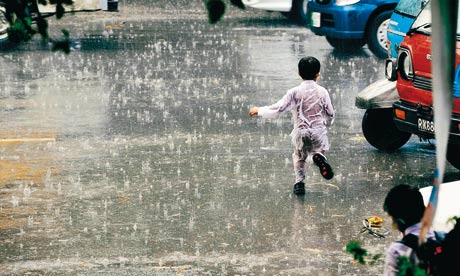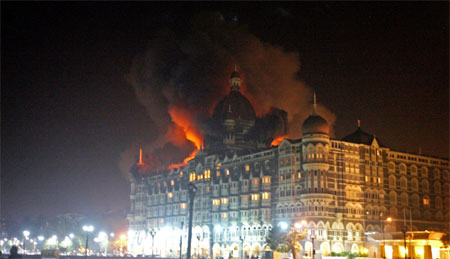
(Left to right: Abir Abdullah/Drik, Golam Kasem Daddy/Drik, Abdul Hamid Kotwal/Drik, Nasir Ali Mamun/Drik, Rashid Talukder/Drik, Mohammad Ali Salim/Drik)
150 Years of Photography from India, Pakistan and Bangladesh
[ 21 January ? 11 April 2010 ]
The work of Bangladesh?s historic and contemporary photographers come together in a landmark exhibition which explores culture and modernity through the lens of photographers from India, Pakistan and Bangladesh. Where Three Dreams Cross is a major survey of historic and contemporary photography from the subcontinent, with over 400 works by 82 artists, to be held at the Whitechapel Gallery in London, UK.
From the archives of Drik, legendary Bangladeshi photographers such as Golam Kasem Daddy, Sayeeda Khanom, Amanul Huq, Nasir Ali Mamun and Rashid Talukder will exhibit alongside their contemporary counterparts, including Abir Abdullah, Munem Wasif, Momena Jalil and Shumon Ahmed. Dr. Shahidul Alam, founder and director of Drik, will also be exhibiting and was one of the curators who brought the show together.
Images on show range from the earliest days of photography in 1860 to the present day. Seminal works from the most important collections of historic photography, including the renowned Alkazi Collection in Delhi, the Drik Archive in Dhaka, the Abhishek Poddar Collection in Bangalore, and the White Star Archive in Karachi join many previously unseen images from private family archives, galleries, individuals and works by leading contemporary artists.
Where Three Dreams Cross gives an inside view of photography from India, Pakistan and Bangladesh.? It includes images from the first Indian-run photographic studios in the 19th century, social realism and reportage photography from the 1940s,
the documentation of key political moments, amateur photography from the 1960s, and street photography from the 1970s. Contemporary documentary-style photographs of everyday life present an economic and social critique, while the
recent digitalisation of photography accelerates crossovers with fashion, film and documentary.
ADDITIONAL INFORMATION
- ? For further press information or images please contact:
Jessica Lim at jessica@drik.net
Rachel Mapplebeck RachelMapplebeck@whitechapelgallery.org
Elizabeth Flanagan ElizabethFlangan@whitechapelgallery.org
Opening times: Tuesday ? Sunday, 11am ? 6pm, Thursdays, 11am ? 9pm.
Tickets: ?8.50/?6.50 concs. Free to under 18s.
Whitechapel Gallery, 77 ? 82 Whitechapel High Street, London E1 7QX.
info@whitechapelgallery.org whitechapelgallery.org
- The exhibition tours to the Fotomuseum Winterthur, Switzerland, 11 June ? 22 August 2010.
- A full colour catalogue accompanies the exhibition, with a curator?s introduction and essays by Sabeena Gadihoke, Geeta Kapur and Christopher Pinney.
- Where Three Dreams Cross: 150 Years of Photography from India, Pakistan and Bangladesh is supported by: Andy Warhol Foundation, Columbia Foundation, Paul Hamlyn Foundation.
- ? List of Participating Artists:
? Abir Abdullah, Bani Abidi, Syed Mohammad Adil, Ravi Agarwal, Shumon Ahmed, Aasim Akhtar, Shahidul Alam, Mohammad Arif Ali, Mohammad Amin, Kriti Arora, Abul Kalam Azad, Pablo Bartholomew, Farida Batool, Jyoti Bhatt, Babba Bhutta, Hasan Bozai, Sheba Chhachhi, Children of Sonagachi, Bijoy Chowdhury, works produced by CMAC, Iftikhar Dadi, Saibal Das, Prabuddha Dasgupta, Shahid Datawala, Lala Deen Dayal, Anita Dube, Gauri Gill, Asim Hafeez, Amanul Huq, Sohrab Hura, Fawzan Husain, Manoj Kumar Jain, Momena Jalil, Sunil Janah, Tapu Javeri, Samar and Vijay Jodha, Golam Kasem Daddy, Sayeeda Khanom, Dinesh Khanna, Anita Khemka, Sonia Khurana, Abdul Hamid Kotwal, Arif Mahmood, Nasir Ali Mamun, Anay Mann, Deepak John Matthew, Huma Mulji, Nandini Valli Muthiah, Pushpamala N., T.S. Nagarajan, D. Nusserwanjee, Prashant Panjiar, Praful Patel, Mohammad Akram Gogi Pehlwan, Dileep Prakash, Ram Rahman, Raghu Rai, Khubi Ram Gopilal, Rashid Rana, Kushal Ray, Kulwant Roy, Vicky Roy, Mohammad Ali Salim, T.S. Satyan, Tejal Shah, Tanveer Shahzad, Ketaki Sheth, Fahim Siddiqi, Bharat Sikka, Dayanita Singh, Nony Singh, Pamela Singh, Raghubir Singh, Swaranjit Singh, Umrao Singh Sher-Gil, Vivan Sundaram, S.B. Syed, Rashid Talukdar, Ayesha Vellani, Homai Vyarawalla, Munem Wasif, G.A. Zaidi.
Where Three Dreams Cross: 150 Years of Photography from India, Pakistan and Bangladesh is curated by Sunil Gupta, photographer, writer and curator; Shahidul Alam founder and Director of Drik Archive and Pathshala, Dhaka, Bangladesh; Hammad Nasar, co-founder of the not-for-profit arts organisation Green Cardamom, London, UK; Radhika Singh the founder of Fotomedia, Delhi?s first photo library and Kirsty Ogg from the Whitechapel Gallery.
- ? The Five Themes (Incorporating historic, modern and contemporary works):
The Perfomance focuses on the golden age of Bollywood in the 1940s and 50s and includes images of actors and circus performers by Saibal Das and Bijoy Chowdhury as well as artistic practices that engage with ideas of masquerade. In addition to
glamorous photographs of actors, film stills and behind the scenes action shots, this section also includes the work of Umrao Sher-Gil, Bani Abidi, Sayeeda Khanom, Sonia Khurana, Amanul Huq and Pushpamala N.
The Portrait charts the evolution of self-representation, through the portraiture of a range of individuals from maharajas to everyday people. Works range from nineteenth century studio portraiture drawn from the Alkazi Collection to Pakistani
street photography by Babba Bhutta, Mohammad Akram Gogi Pehlwan and Iqbal Amin as well as contemporary work that offers a new take on the form by Shumon Ahmed, Gauri Gill and Samar and Vijay Jodha.
The Family explores and close relationships and group affiliations within society. It traces a history from late nineteenth century hand-painted family portraiture by artists such as Khubi Ram Gopilal through to informal amateur snaps by Nony Singh and Swaranjit Singh as well as contemporary investigations of creed, communities and race.
The Streets addresses the built environment, social documentary and street photography. This section encompasses a range of works from the early studies by Lala Deen Dayal to images of a globalising India by Bharat Sikka. It intersperses the
photo-documentary traditions of Ram Rahman and Raghubir Singh with contemporary practices by artists such as Iftikhar Dadi and Rashid Rana.
The Body Politic looks at political moments and movements within the subcontinent?s history. It touches upon the key dates of 1857, 1947 and 1971, as well as expanding beyond the tension lines between castes and beliefs to explore sexuality and eco-politics.? Portraits of nineteenth century courtesans feature alongside portraits of politicians. Also included are Sunil Janah and Homai Vyarawalla?s iconic press images, the photo journalism of Tanveer Shahzad and Rashid Talukdar, Kriti Arora?s? documentation of Kashmir, Munem Wasif?s? images recording the effects of global warming in Bangladesh and Sheba Chhachhi?s female mendicants.
Review in Guardian (UK)
Review in Independent (UK)




